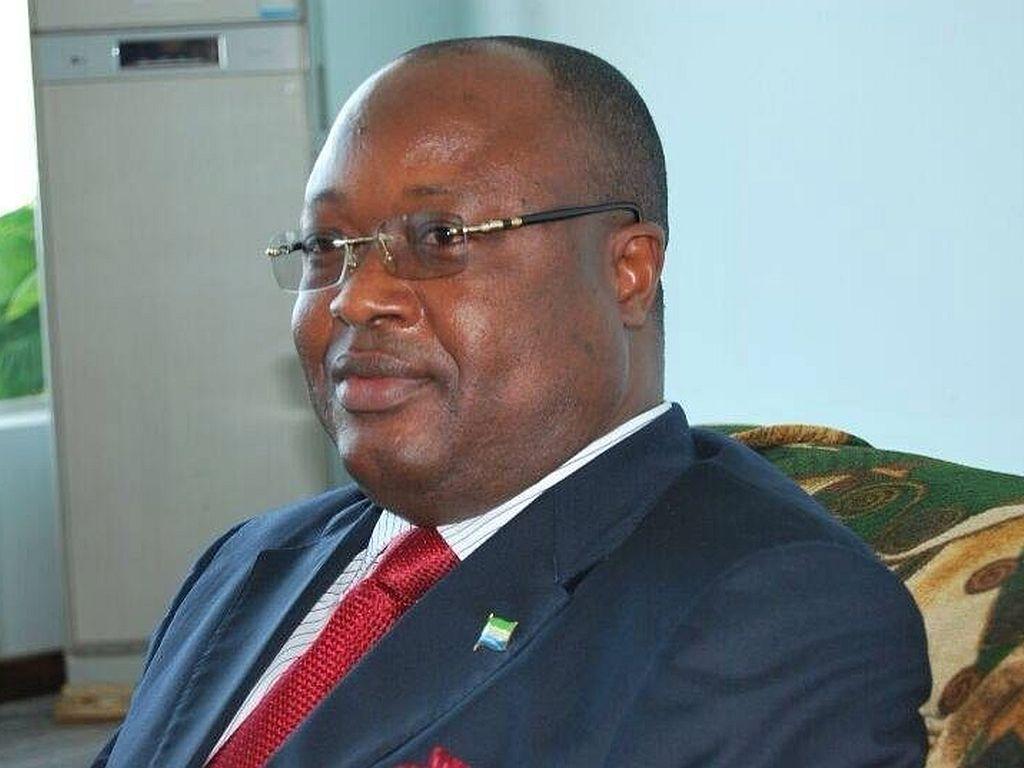Banking with 2012
By Bhoyyie Jalloh
In mid-July last year the Bank of Sierra Leone (BSL) was pressed by the Bretton Woods Institutions to cause a critical assessment of the banking system, with focus on risks and vulnerabilities. The feedbacks were debasing. Thus, there was need to test the resilience of the industry to credit foreign exchange, liquidity and sovereign risks. By this time the financial muscles of certain banks were contracting. BSL was losing grip of its oversight role. Some banks almost faltered and there was no arbiter; so the situation festered and wreaked havoc on ordinary lives. We hope for change in 2012.
In this piece, looking at the susceptibilities of the banking sector to hazards with particular reference to fears around risk management, control and oversight, strength and preparedness of the central bank to provide adequate supervision in 2012, I am trying to point out the trials of a flagging relationship between the BSL, its authority and the financial system. Should the public bank on the central bank to bank with the banks? Let’s cast our minds ahead, based on current realities, to attempt to answer that question.
In the first place there are reasons for apprehension. And here is why:
In late last year the Stability Analysis Report on Sierra Leone’s financial sector indicated that “the banking system was vulnerable to a certain level in all of the key areas of assessment and, therefore, had weaknesses.” As a consequence, between October and December 2011, this fear became a reality.
Quoting a BBC report aired on 2 January, “2012 has begun the same way 2011 ended. There is an apparent liquidity crisis leading to customers queuing up at banks for their money. Sources in the banking industry say the central bank is short of cash. Bank of Sierra Leone is yet to comment on the situation despite its persistence. They [BSL] are also grappling with the country's currency the Leone which is on clay legs.”
In fact in a July 2011 document titled: ‘Financial Sector Reform and Development in Sierra Leone,’ authored by Omotunde E. G. Johnson for the International Growth Centre (IGC), the pessimism was even justified. “Sierra Leone is at a very low level of financial development. It is a country of about six million people, with a per capita annual income currently around US$315. Sierra Leone currently has thirteen commercial banks, nine community banks…, two savings and loans…, and some forty-two foreign exchange bureaus,” according to the IGC, which is based at the London School of Economics and offers independent advice on economic growth to governments of developing countries.
While there seemed to be no indication of serious efforts to correct a possible liquidity wrong by end of 2011, this year’s fiscal prudence is likely to suffer neglect. This is an election year and reckless spending, like many election years, is not likely to heed any fiscal policy advice that is informed by judicious management. If anything the BSL could be at the mercy of the powerful power.
Meanwhile, a possible way out of this could include, but not limited to, a legal requirement that limits central bank credit to government to 5 percent, especially in an election year. It could enhance the independence of BSL and facilitate achievement of the monetary policy target it sets itself.
In addition the BSL could issue revised prudential guidelines in line with the amended banking act to enhance compliance with the Basel Core Principles (structural benchmark for end-September 2012). The said amendment to the BSL Act, which was submitted to parliament in November 2011, sets a limit on the annual flow of direct credit to government (loans and advances). It requires that such direct credit be repaid within 93 days from the end of the financial year.
But 2012 is here, and the status quo might flourish on inadequacy, abandoned legal regime and outright lack of oversight. The situation might get defiant. No thought is being given to that. Granted that Sierra Leone has a fairly liberalized financial system but interest rates and exchange rates are obviously market-determined. In other words, there are no selective credit controls.
“The soundness of the financial system is in some question, although it is not in any danger of crisis. The capital–asset ratio of the banks, for example, is good (about 17%), but non-performing loans are a problem, tending to hover around 16% in recent years,” the IGC observed. The report also found out that the current state of banking supervision was rudimentary. Again the BSL’s supervisory efforts, capacity and capability are being questioned.
“One certainly does not see any attempt to explicitly organize the approach to assessing the soundness and management of a financial firm in light of risks and risk management. This would emphasize the importance of a clear understanding of financial risks and optimal assignment of the responsibility for managing different types of risk (namely, liquidity, credit, interest rate, market, foreign exchange, operational, sovereign, legal, and fraud risk),” said IGC.
It also added that, all in all, the regulatory strategy is in need of a focused, coherent, modern approach. Banks in Sierra Leone are small with assets averaging about US$45 million, efficiency is low with non-interest expense averaging about 10.1% of total assets and interest rate spreading some 10.8 percentage points. There is also a high concentration in the banking sector despite recent improvement with the three largest banks – Sierra Leone Commercial Bank, Rokel Commercial Bank and Standard Chartered – holding about 54% of total assets. Skill and experience level of bankers are deemed to be low on average.
The payment system is very rudimentary, with no interoperable ATM system, no widespread credit card use in domestic payment transactions, no significant use of cheques or internet banking, and, of course, no electronic large-value payment system.
There is also no credit rating agency. Therefore, although there is no generally available empirical evidence on the matter, it is also very doubtful that the commercial banks have the data or the sophistication to have developed internal processes going beyond so-called traditional approaches to credit risk management.
Meanwhile, as we resolve to bank with and on 2012, the International Monetary Fund has some pieces of advice that could lead to responsible monetary engagements and the health of Sierra Leone’s financial systems, the banking sector. According to the Fund, “Spending must be kept in line with available financing to preserve hard-earned macroeconomic and debt sustainability. Infrastructure investment should be well grounded in medium-term public investment plans. It will be important to contain the wage bill while gradually raising public servant compensation to more competitive levels. This must be done in the context of a multiyear pay reform where corresponding savings are achieved through re-grading and retrenchments. To safeguard budgetary resources in the medium-term, the government should revisit the fuel pricing policy to ensure full pass-through from international to domestic prices while restoring fuel excises. Targeted measures should be adopted to protect the poor from significant fuel price adjustments.”
Perhaps a more appropriate intervention could be to learn how to deal with obvious liquidity crisis such as the one that rocked commercial banks across the country in the last three months. Access to funds was limited and banks could not pay people at a time like Christmas and New Year when they badly needed them to offset mounting social pressures. No obvious BSL reaction to the hardship was in the public domain. The situation is still refusing to go.
However, BSL can only maintain control over the supply of reserves and hence achieve its stated policy objective by developing a liquidity forecasting framework, an effort it first initiated in 2008 but is still grappling with. Meanwhile, in a lecture series titled: Central Bank Management of Surplus Liquidity (August 2006, Centre for Central Banking Studies, Bank of England), Simon T Gray noted that where there was a structural deficit and that the central bank should always lend enough to bring banks back to balance. Is BSL readily strong enough to do so?
“If the central bank judges that demand for liquidity is growing too fast, it will usually increase the cost of supplying liquidity, whether by raising its policy rate, or forcing banks to borrow more at penal standing credit facility rates. But it will always lend a sufficient volume to offset the shortage,” Gray suggested. He said: “The alternative would be disruption in the payment system: either banks would not be able to purchase enough banknotes to satisfy customer demand, or they would not be able to settle all payments due across the central bank’s balance sheet. At the margin, banks might have sufficient funds to make due payments, but would be left with smaller working balances than desired.”








